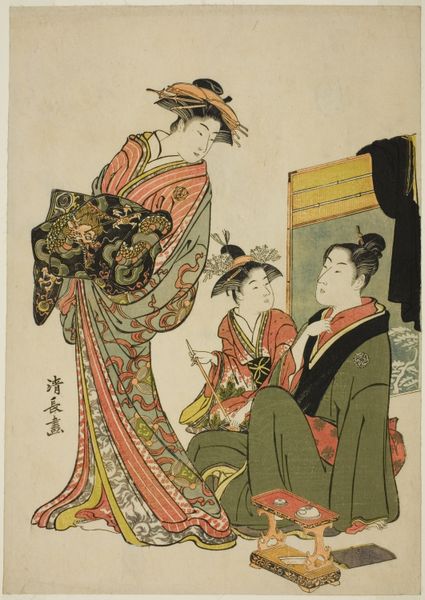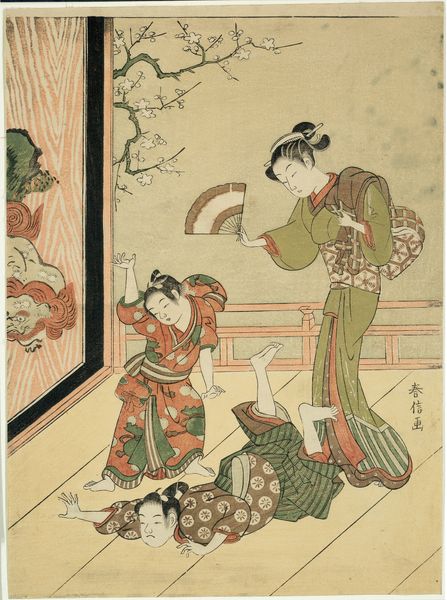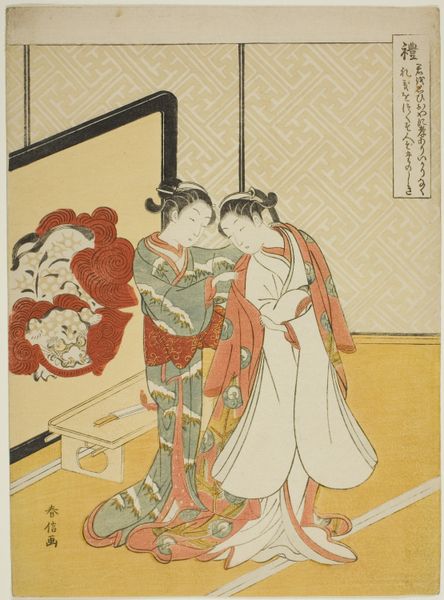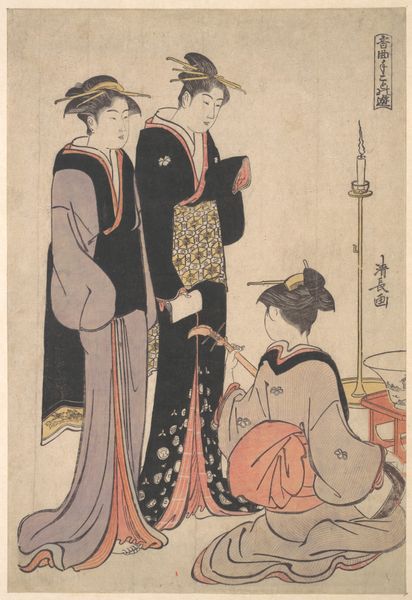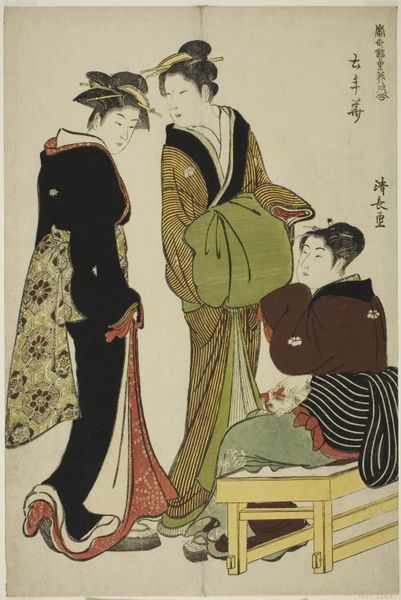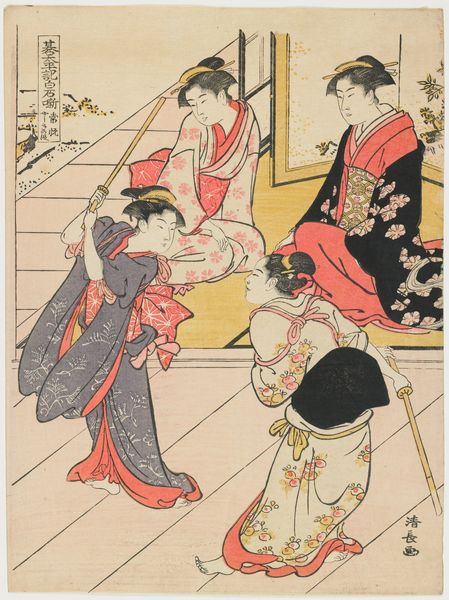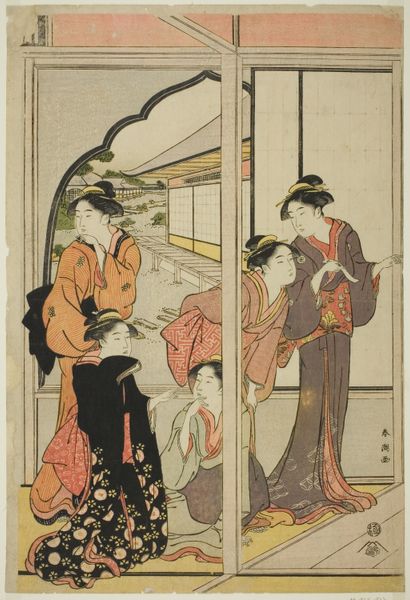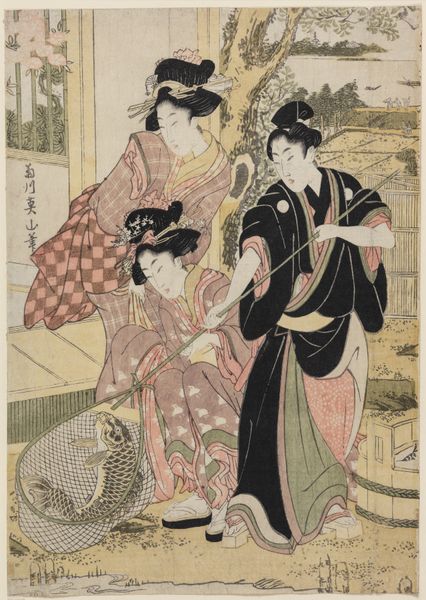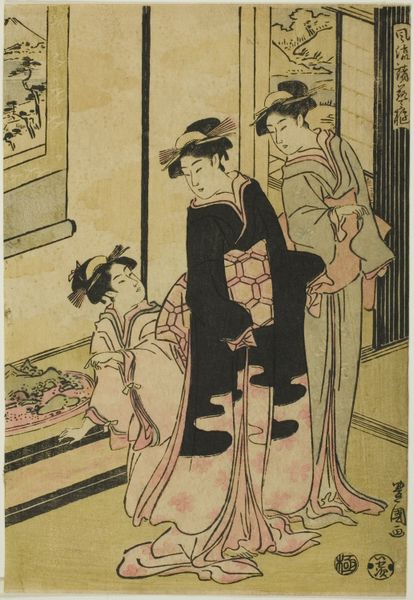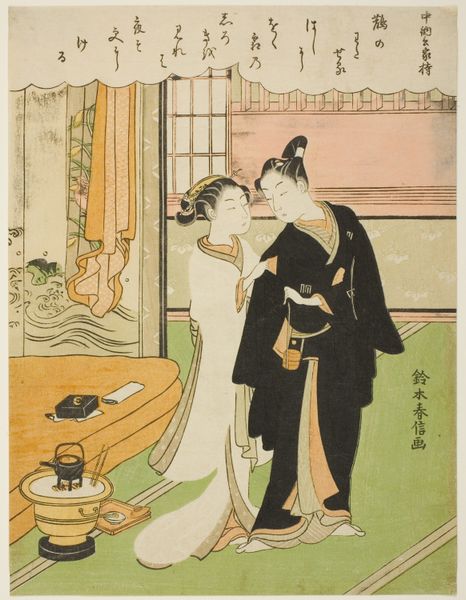
Tamonten, from the series "The Seven Gods of Good Luck in Modern Life (Tosei Shichi Fukujin)" c. 1769
0:00
0:00
print, woodblock-print
#
portrait
# print
#
asian-art
#
ukiyo-e
#
woodblock-print
#
genre-painting
Dimensions: 11 × 8 in.
Copyright: Public Domain
Curator: Right, let's explore this fascinating print. It’s titled "Tamonten, from the series 'The Seven Gods of Good Luck in Modern Life (Tosei Shichi Fukujin)'" created around 1769 by Suzuki Harunobu. You can find it here at the Art Institute of Chicago. Editor: My immediate impression is of gentle humor and a surprising intimacy, given the subject matter. The colors are so muted, lending it a tranquil air, despite the activity. Curator: Indeed, the subdued palette is characteristic of Harunobu’s style. This ukiyo-e print re-imagines the traditional god Tamonten in a domestic setting. Look at the crane motif on his robe – cranes symbolize longevity and good fortune, reinforcing his divine identity, but presented in such a casual way. Editor: Yes, he’s almost comical with that elaborate headpiece! The composition also draws me in; the positioning of the figures, that intriguing triangular arrangement between them. I wonder if that’s referencing a more traditional compositional element? Curator: It's more than likely a subtle wink to classic portraiture, placing the immortal within the transient. The woman touching Tamonten's face suggests she's questioning his identity, which is a commentary on shifting belief systems adapting to the times. Note also how tea steams softly in the background—domesticity and the sacred blend together. Editor: And the lines! Notice how Harunobu delineates forms not with sharp outlines, but through subtle variations in color density? That technique really enhances the ethereal quality of the scene. It’s fascinating. Curator: The tea ceremony set behind him, typically associated with spiritual purification and social harmony, becomes a part of Tamonten's contemporary existence, adding depth to his persona. He isn't some remote deity, but actively part of everyday life. Editor: It seems to playfully explore the modernization of the sacred and the persistent human desire for luck and prosperity. The diagonal arrangement really pushes our eyes around the scene. Curator: Ultimately, I think Harunobu prompts us to examine the resilience of tradition in modern contexts, and the nature of our cultural values as they evolve. Editor: It has certainly offered much for our consideration today. What a great artwork!
Comments
No comments
Be the first to comment and join the conversation on the ultimate creative platform.
